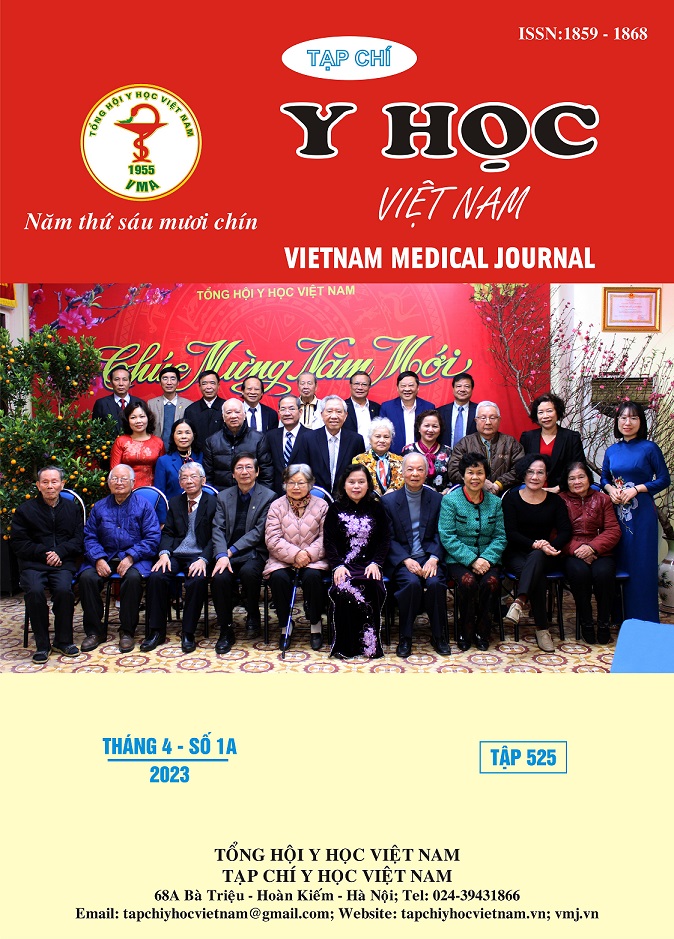EPIDEMIOLOGICAL CHARACTERISTICS, RISK FACTORS OF SCRUB TYPHUS IN SOME KEY AREAS
Main Article Content
Abstract
Objectives: To describe the epidemiological characteristics, risk factors of scrub typhus in some key areas. Subjects and methods: a cross-sectional descriptive study, sampling and testing by ELISA method to detect anti-Orientia tsutsugamushi antibodies on 21,630 serum samples collected from 12 provinces in 3 regions of the Northwest, the Central Highlands and the Southwest. Results: The percentage of people with general anti-Orientia tsutsugamushi antibodies was 9.88%; The highest is in the Northwest at 12.17%, followed by the Central Highlands at 11.04% and the lowest in the Southwest at 6.42%. The highest rate of infection was in the 36-55 age group (11.17%) while the lowest rate was in the under 15-35 age group (8.54%). The proportion of people with anti-Orientia tsutsugamushi antibodies in the Kinh ethnic group was 13.69%, higher than that of the other ethnic groups (6.00%). The infection rate in the group of people working in agriculture was the highest at 12.47% compared to some other occupations. The proportion of people with anti-Orientia tsutsugamushi antibodies in the community living in the areas with Savan habitat characteristics and regenerating forest, respectively, is 11.26% to 11.38% higher than the population living in the area. primary forest (6.17%). Conclusion: The overall rate of people carrying anti-Orientia tsutsugamushi antibodies was 9.88%. There are differences in the rate of infected people across regions, genders, ages, ethnicities, occupations and regions.
Article Details
Keywords
epidemiology, scrub typhus, key areas
References
2. Xu, G., et al., A review of the global epidemiology of scrub typhus. PLoS Negl Trop Dis, 2017. 11(11): p. e0006062.
3. Watt, G. and P. Parola, Scrub typhus and tropical rickettsioses. Curr Opin Infect Dis, 2003. 16(5): p. 429-36.
4. Đoàn Trọng Tuyên, V.C.T., Nguyễn Minh Tiếp, Nguyễn Viết Sự, Trần Quang Nguyên & cs Khảo sát mức độ lưu hành bệnh sốt mò tại một số khu vực thuộc Tuyên Quang, Khánh Hòa và Kon Tum. Tạp chí Y học quân sự, 2008: p. 30-34.
5. Nguyễn Văn Châu, Bạch Ngọc Luyến, Nguyễn Quang Thái và cs (2009), “Kết quả điều tra chuột và mò tại một số ổ sốt mò (Orientia tsutsugamushi) thuộc miền Trung và Tây Nguyên, Tạp chí phòng chống bệnh sốt rét và các bệnh ký sinh trùng, số 6 -2009, tr. 46-53.
6. Đoàn Trọng Tuyên (2010), Nghiên cứu sự lưu hành bệnh sốt mò trong cộng đồng dân cư khu vực Tây Nguyên và ứng dụng kỹ thuật PCR trong chẩn đoán, Đề tài NCKH cấp Bộ Quốc phòng.
7. Upadhyaya B. P., Shakya G., Adhikari S., Rijal N., Acharya J., Maharjan L. (2016), Scrub Typhus: An Emerging Neglected Tropical Disease in Nepal,J. Nepal Health Res. Counc, Vol. 14(33), pp. 122-127.
8. Nguyễn Văn Tuấn, Vũ Đức Chính, Nguyễn Văn Đạt, Nguyễn Văn Dũng, Trần Văn Thanh (2017), “Thành phần loài, mật độ mò và tình hình bệnh nhân sốt mò tại một số xã thuộc huyện Mù Căng Chải, huyện Văn Chấn tỉnh Yên Bái năm 2016”, Báo cáo khoa học Hội nghị Côn trùng học Quốc gia lần thứ IX, tr. 1004-1010.


